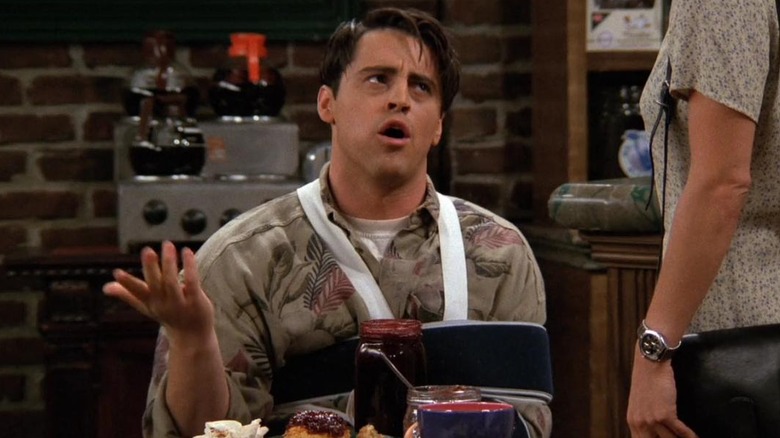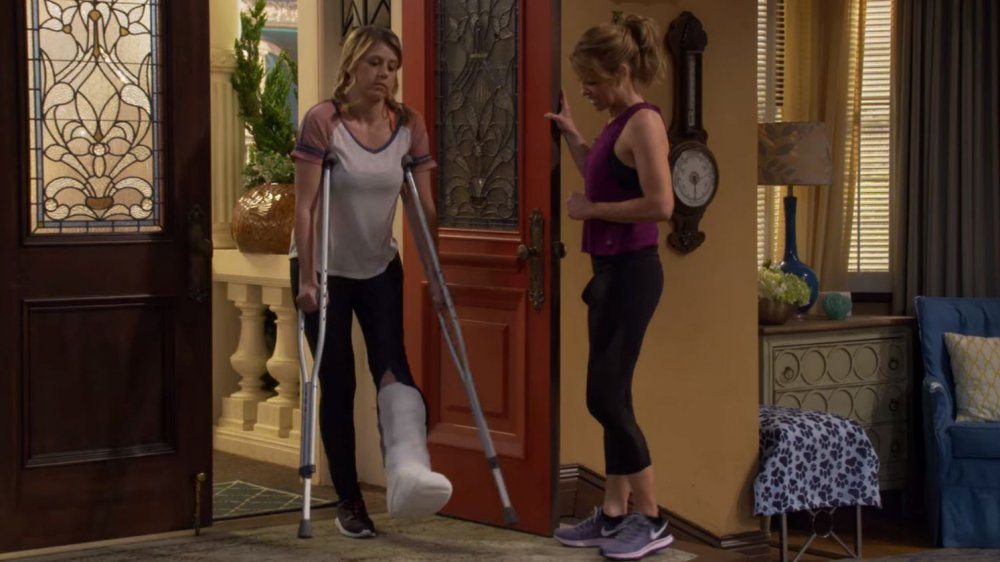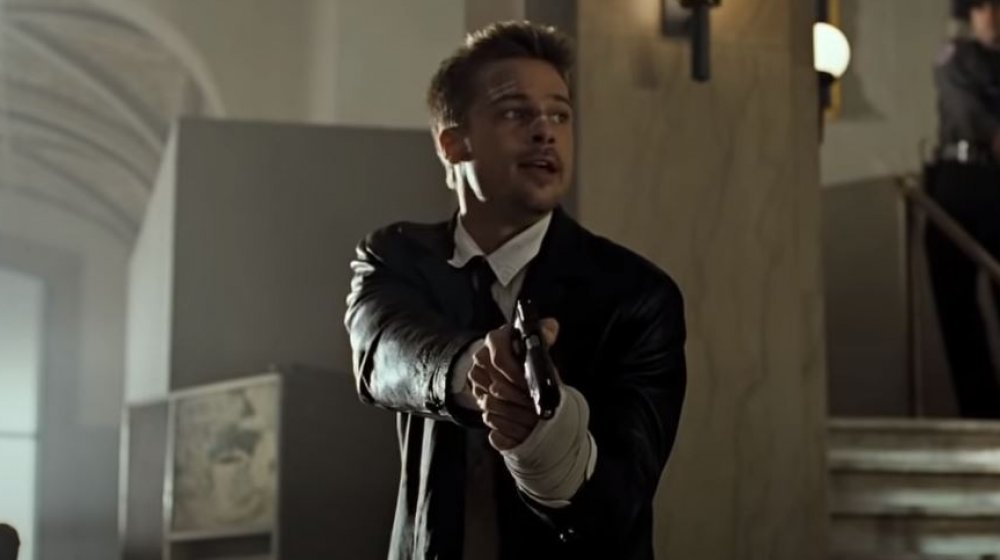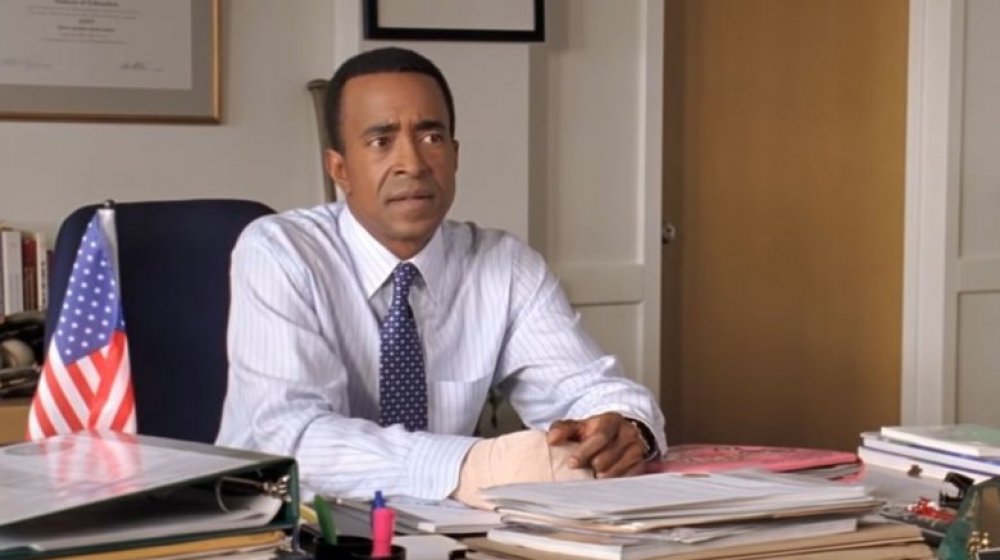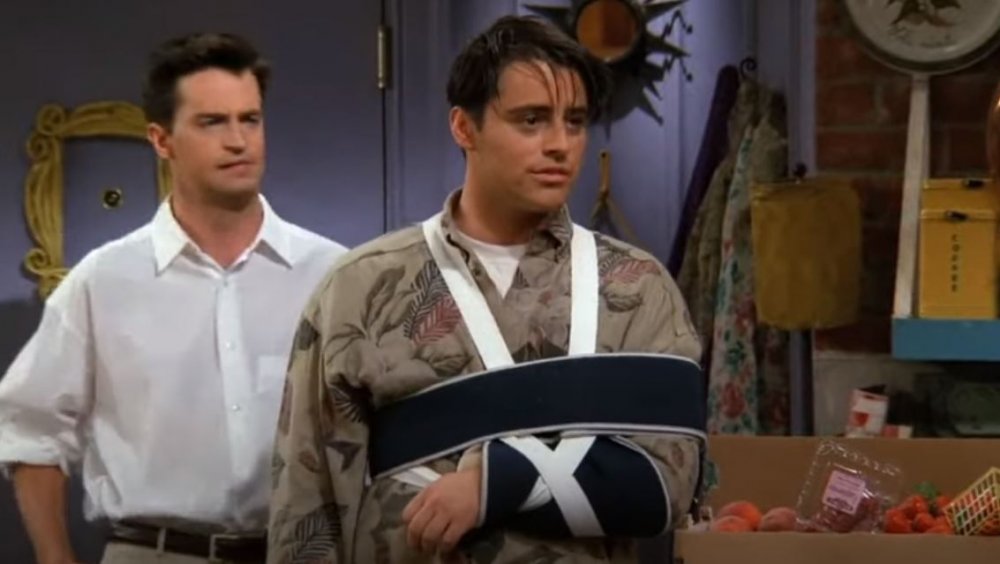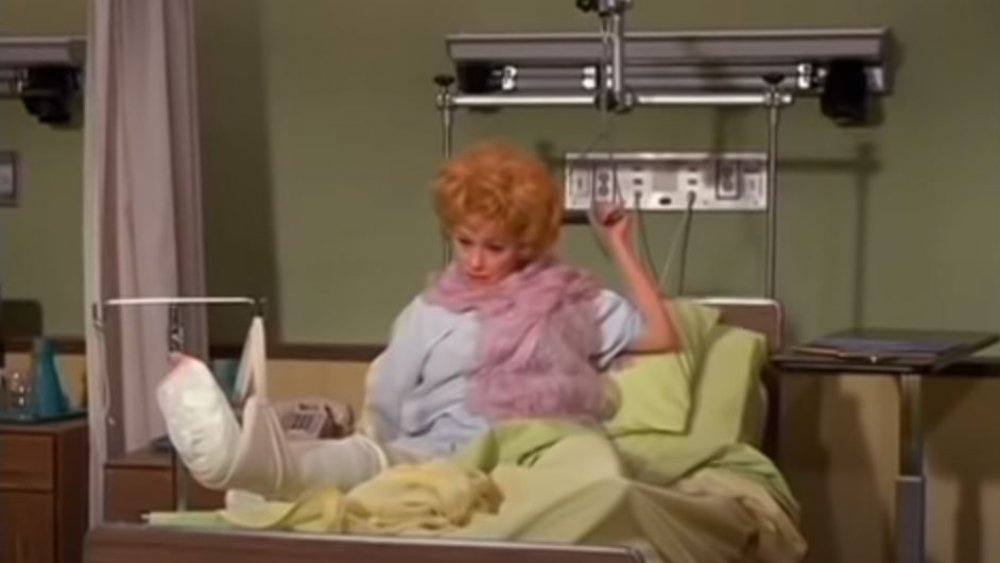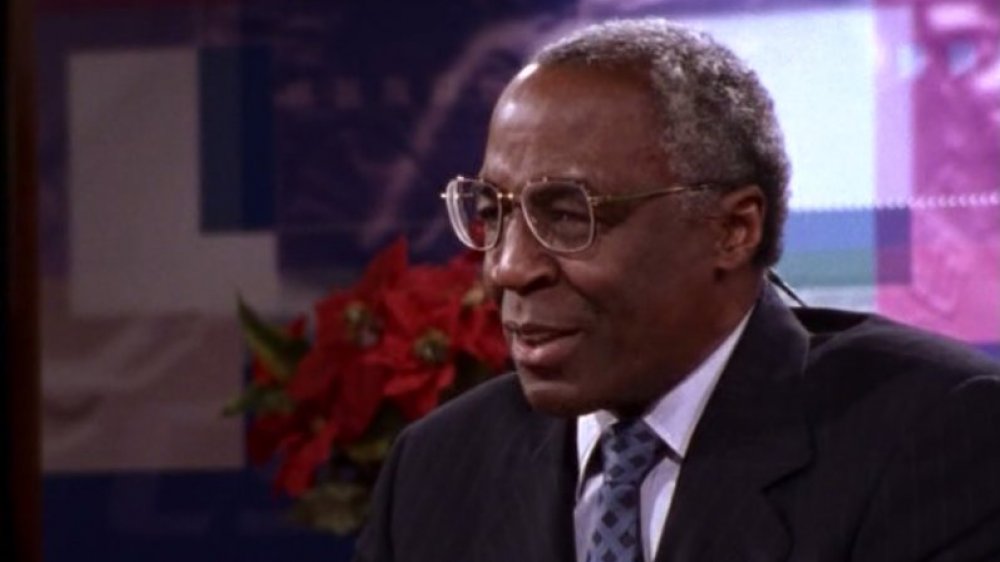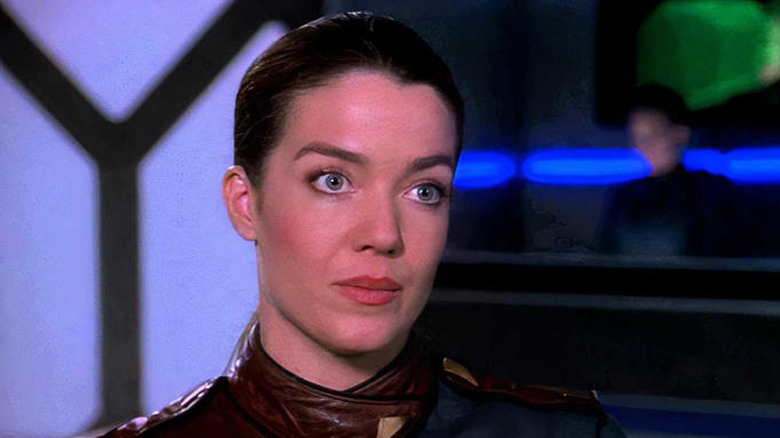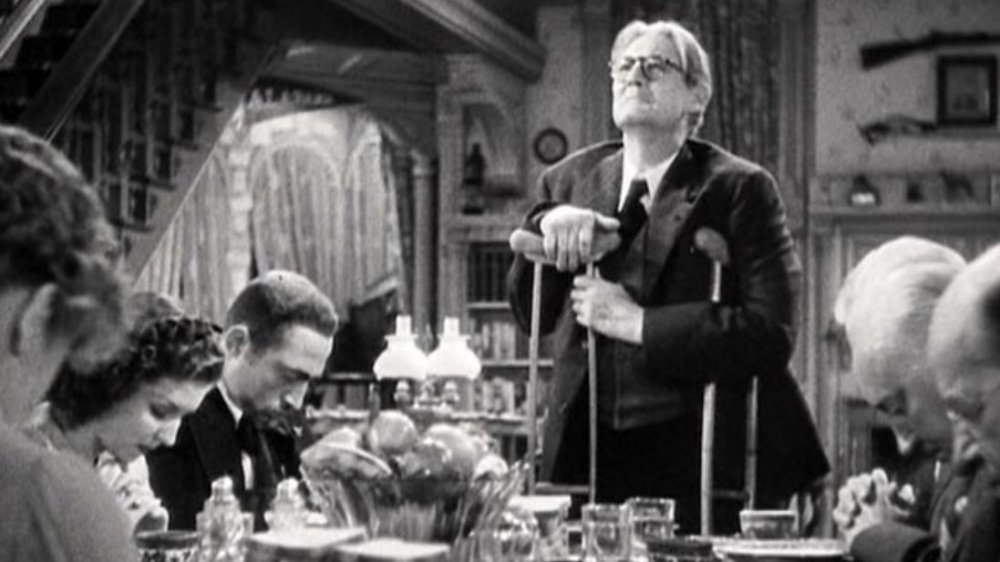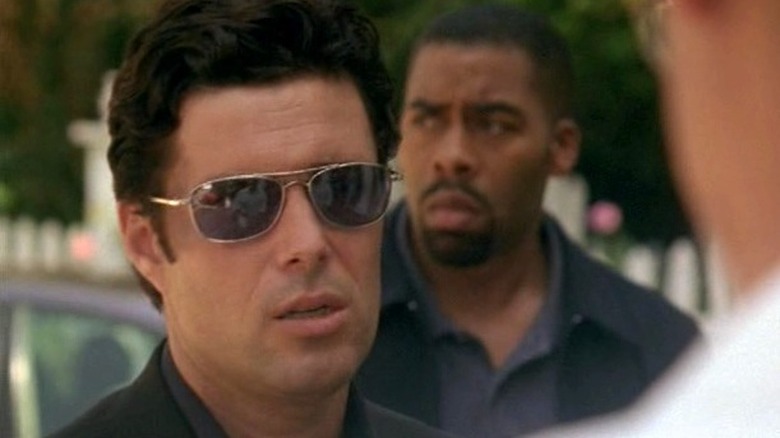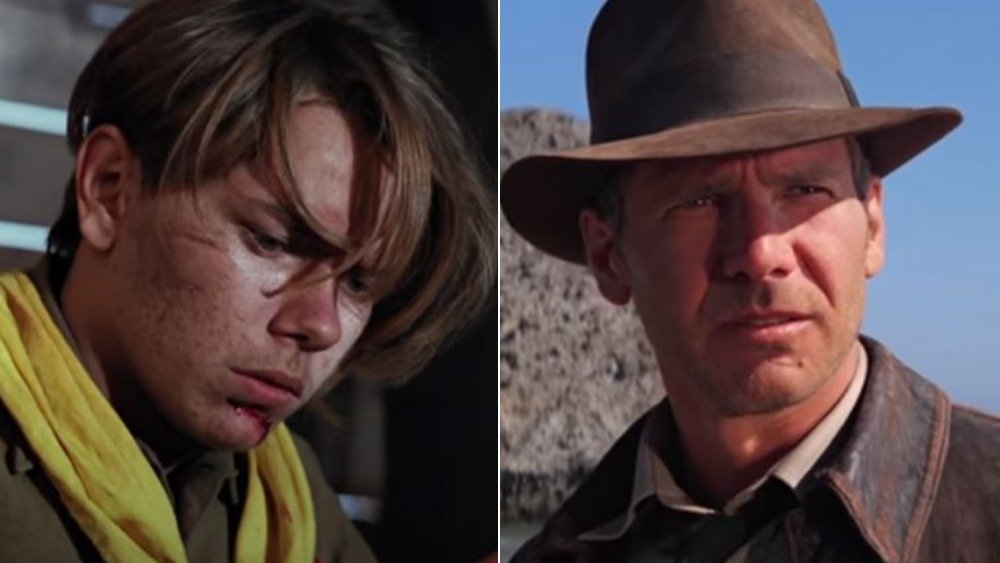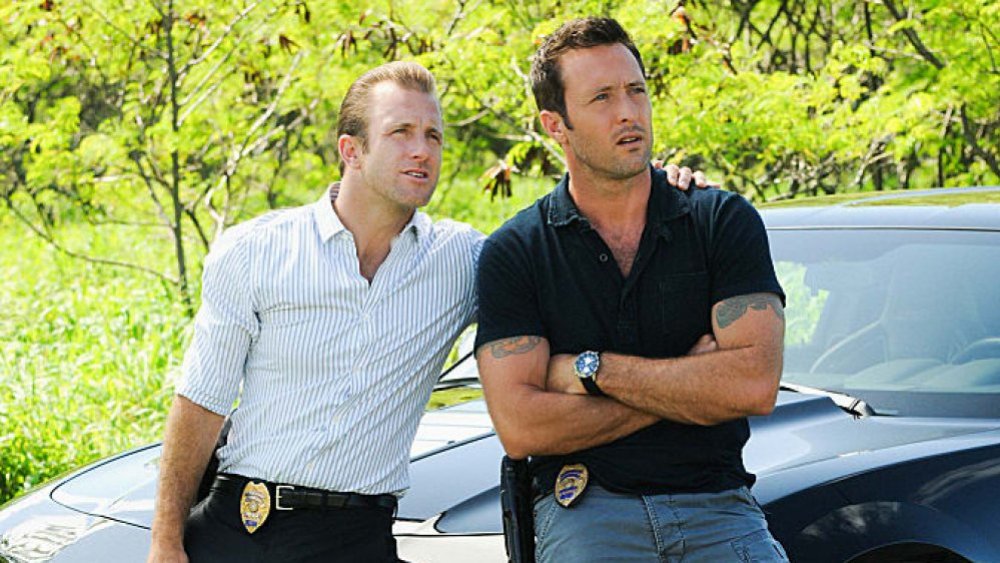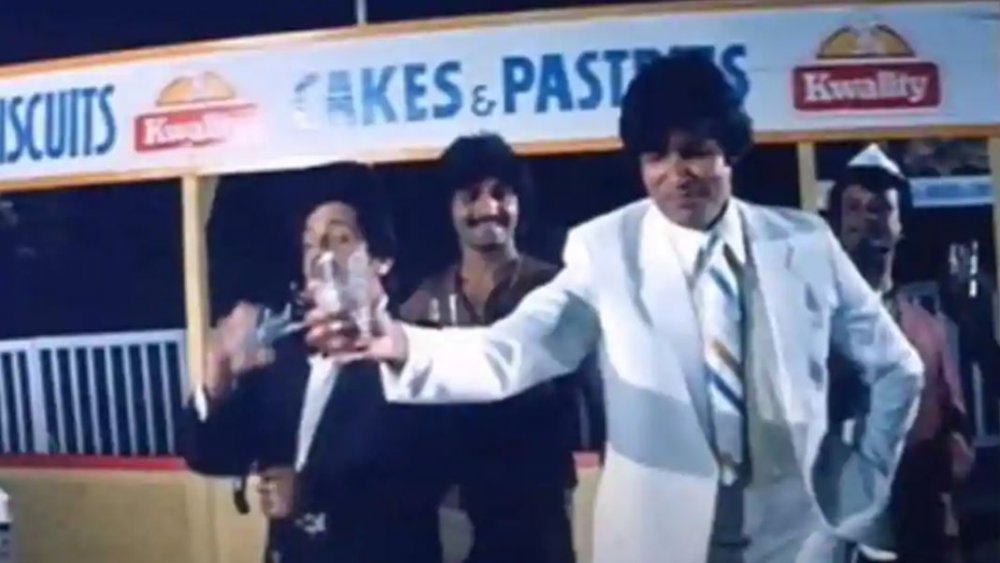Actor Injuries That Were Written Into Storylines
The show must go on, as anyone in show business knows. No matter what happens, actors will soldier through it to bring the movie, episode, play, or skit to a solid ending. Of course, actors are human beings, not computer simulations. Human beings have human bodies which break down, get sick, and on occasion, outright break. When this happens, directors, producers, and writers are faced with the task of how to handle it.
Sometimes, for any number of reasons, the injury gets written into the storyline. Maybe it's too late to recast, or too far into production to pause. Other times, a writer comes up with a workaround that's genuinely compelling. A good actor, or at least one associated strongly enough with the property in question, isn't worth losing, and it's often more efficient to just find creative ways of making a real-world injury work. These are a few times when actors' injuries were successfully integrated into storylines of movies or TV shows, from broken legs to mysterious scars.
Jodie Sweetin's broken leg led to a partial season rewrite of Fuller House
In January of 2017, Jodie Sweetin's daughter threw a toy over a fence. Pretty routine thing, as far as kids go. What happened next was not routine, however: Sweetin climbed over the fence to retrieve it, only to land poorly. She broke her ankle and had to wear a cast. Production for season three of Fuller House was ramping up at the time, and Stephanie Tanner absolutely needed to be there. This necessitated a rewrite for the start of the season that included Sweetin's injury.
Steph breaks her leg in episode two, appropriately titled "Break A Leg," after D.J. convinces her to go on a "two mile fun run." The injury is used to contrast fitness-happy D.J. against the more easygoing Steph. Steph spends the next few episodes in the cast, involved in stories crafted to accommodate it. In the next episode, "Declarations of Independence," Steph says that she doesn't want anyone's help while she's in the cast, which Jimmy takes a little too literally by often abandoning her.
Brad Pitt's cast in Se7en was real
About halfway through Se7en, Detective David Mills (played by Brad Pitt) chases someone down a rainy street. While shooting the scene, Pitt slid on the hood of a car and smashed into the windshield. Producers on set didn't want to get into detail about what they saw, but it was apparently a gruesome scene. Pitt severed a tendon in his hand and required emergency stitches. He returned to set just a few days later.
Quite a lot of the movie still had to be shot by this point. This role was expected — correctly, as it turns out — to add some serious credibility to the freshly-minted Sexiest Man Alive. As such, they wrote his cast into the script. Mills wears a cast for the rest of the movie: Pitt's chase-scene injury became Mills' chase-scene injury. For scenes that were shot out of sequence, the cast was simply concealed.
Tim Meadows broke his wrist and ended up with carpal tunnel in Mean Girls
Just about a week before shooting on Mean Girls started, Tim Meadows broke his wrist. There were major concerns about this — though many cast members would go on to massive success, Meadows was, at the time, one of the biggest names attached to the project. His talents would be hard to replace as well, and his role as Principal Ron Duvall is a meaty enough part that recasting would have proven tricky.
Instead, Tina Fey figured out how to write it into the script. In what should have been throwaway dialogue but ended up being memorable, Duvall explains that his carpal tunnel syndrome came back while comparing his summer with that of Mrs. Norbury. This helps explain him having the cast for the whole movie, which spans several months — a recurring problem like carpal tunnel requires a cast more frequently and for longer periods of time than a broken wrist. But it also ended up doing a great job of establishing Duvall as a charming, self-effacing character with a crush on Mrs. Norbury.
Matt LeBlanc's freak injury led to Joey wearing a sling
Friends' third season episode, "The One Where No One's Ready," is a strange one. It's a bottle episode in a series that doesn't have many episodes of that type, and one that takes place in what comes very close to real time. The crowd in attendance was flown in from across the country, made up of contest winners from a Diet Coke-sponsored contest. It's also the episode in which Matt LeBlanc got injured during an otherwise innocuous stunt.
By LeBlanc's telling, Joey and Chandler were supposed to both jump over a coffee table and land on a nice big chair. "I don't think," said LeBlanc, "it even qualifies as a stunt." Somehow, LeBlanc landed incorrectly: He walked backstage and realized that his shoulder was not where it should be. Production was shut down, LeBlanc went to the hospital, and the entire audience got sent home — much to the chagrin of Diet Coke, who had to fly them back out for make-up episodes. The writers handled LeBlanc's injury by putting Joey in a sling for a few episodes, explained away as the result of a very in-character action: Joey's decision to jump on the bed.
Lucille Ball broke her leg skiing and turned it into a season-long storyline
Here's Lucy was Lucille Ball's third network show starring herself, after I Love Lucy and The Lucy Show. Ball stars as Lucy Carter, and her real life children — Lucie Arnaz and Desi Arnaz, Jr. — portray the fictional Lucy's children as well. Here's Lucy is not as well remembered as either of Ball's previous shows, especially the first, but it still managed to run for six seasons and earn respectable ratings. Of course, in order to have ratings, you need to have a show at all — which very nearly wasn't the case.
The show faced a major challenge in 1972 when Ball fractured her leg while skiing. Ball, ever the consummate professional, didn't let obstacles like "being bedridden" and "needing to restructure the entire show" get in her way. She just had the character of Lucy break her leg and wrote much of the season around that limitation. The season five opener sees her in a hospital bed while all the other characters visit and interact with her, all while she's falling in love with a doctor. Some TV scholars credit the broken leg with improving the show — it forced characters to interact with Lucy in new ways, thus fleshing them out.
Robert Guillaume's stroke became Isaac Jaffe's stroke on Sports Night
Isaac Jaffe was one of Aaron Sorkin's first big Leader-with-a-capital-L characters. The managing editor of the titular Sports Night, Jaffe is the voice of moral clarity among the staff, and the glue that keeps everyone together. His actor, Robert Guillaume, was regarded similarly by the actual cast and crew of the show. As such, it was a shock when Guillaume suffered a stroke on set.
When Guillaume's condition cleared up, Sorkin "promised [Guillaume] if he wanted to come back to work that [Sorkin] would simply give the character a stroke." Guillaume survived his ordeal with no impediments to his speech, and the knowledge that he could come back gave him hope. As promised, Guillaume's stroke became Issac's stroke. The character disappears for several episodes, and is welcomed back at the end of the first season. Season two begins with Isaac dealing with the stroke affecting his performance.
Claudia Christian broke her foot and so did Ivanova
Babylon 5 broke TV ground by being a serialized show in an era when most TV — especially most sci-fi TV — was episodic. This was a great arrangement for the actors, as long as they showed up and stayed healthy. That latter part became a problem before the fifth episode of season two, "The Geometry of Shadows," when Claudia Christian, who played Lt. Commander Susan Ivanova, broke her foot in an off-set accident.
Ivanova was simply too important to sideline for an episode — the show just had to go on, somehow. As such, the broken foot was written into the script by series creator J. Michael Straczynski. "Shadows" sees Ivanova get into a fight with a group of aliens known as the Drazi, who knock her down and break her leg. Unable to get up on her own, Garibaldi comes to her aid and helps her get medical treatment. She spends the rest of the episode recovering from the injury.
Lionel Barrymore's ailments were covered with a cast
Lionel Barrymore had settled into being typecast as "obstinate old man who secretly cares" by the 1930s. The most prominent of these roles was Grandpa Martin Vanderhof in Frank Capra's 1938 classic, You Can't Take It With You. Based on the Pulitzer Prize-winning play of the same name by George S. Kaufman and Moss Hart, a few changes occurred in the transition from play to big-screen motion picture. One of these is the presence of a cast and crutches for Grandpa Vanderhof. This was the result of Barrymore's health issues being written into the script.
Barrymore had begun suffering from a variety of ailments by the mid-1930s, most prominently arthritis. Later movies, such as It's A Wonderful Life, would confine him to a chair from the get-go. 1938 was a different story — between being in the early stages of his illness and the character already being established, some tweaks were needed. As such, the in-universe explanation is that Grandpa Vanderhof broke his leg after sliding down the banister with his granddaughter. Thus, the crutches and cast.
Tony Almeida's broken ankle came from Carlos Bernard's actual broken ankle
Carlos Bernard likes playing basketball on days he isn't acting. Unfortunately, one game resulted in a broken ankle, which necessitated months of crutches. This was a major problem, given the fact that he played Tony Almeida on 24, a show that takes place over the course of 24 hours. That doesn't leave much time to explain why one character is suddenly sporting a cast.
Luckily for Bernard, 24's entire raison d'être is "make these characters suffer." The writers had no trouble with this one. In episode 16 of season two, "Day 2: 11:00 p.m. — 12:00 a.m.," Tony and Jack get into a quick fight, which sees Tony fall over, accompanied by a loud crack. The next episode begins with Tony getting medical attention, and he's on crutches for the rest of the season.
Bernard calls the fight scene "the lamest fight in the history of television." It's not — that honor clearly goes to Captain Kirk grappling with the Gorn – but it's pathetic nonetheless. It's also the most lasting physical damage Tony ever experiences. Need proof? The next season sees Tony get shot in the neck, only to shrug it off and get back to running the CTU a few hours later.
Harrison Ford's chin scar was written into Indiana Jones
Harrison Ford got his distinctive chin scar years before he became a star. Back when he was just an average department store employee, he tried to put on his seat belt while driving and slammed into a telephone phone. His chin smacked into the steering wheel, which led to the scar. A scary situation for sure, but Ford calls the accident "a mundane way of earning" the scar. Not sure we'd call a car crash necessitating minor surgery "mundane," but it's certainly calmer than all the plane crashes he got into later in life.
Of course, having a few marks helps when you're an action star — it adds to the "tough guy" image. As such, his scar was worked into Indiana Jones and the Last Crusade. Young Indy, played by the late River Phoenix, gets the scar after using his iconic whip for the first time.
Scott Caan's injury becomes Danny Williams' on Hawaii Five-0
Scott Caan found a way to injure himself before Hawaii Five-0 even debuted. Just a few episodes into shooting the 2010 reboot of the 1960s cop series, Caan, who played Detective Sergeant Danny Williams, tore his ACL. One account has the tear happening during a stunt, while another says it was sustained during a Brazilian jiu-jitsu fight. Either way, he had to be flown back to Los Angeles and have it repaired. Shooting schedules were moved around, but this was a network cop show with a full series order — they needed the episodes out.
As such, Caan was back on set just a few days later in a knee brace. The show wrote the injury in: Danny Williams needs medical treatment and blames it on his partner. Years later in 2017, Caan sustained another injury, necessitating an arm brace, which was also written into the show.
Bollywood icon Amitabh Bachchan nearly lost his hand and turned it into distinct character features
Amitabh Bachchan is one of the biggest stars in Bollywood history. He has over 200 credits to his name and was the most prominent actor on the subcontinent in the 1970s and 80s. His work is revered not just in India, but worldwide, and has earned him many awards. He also accidentally started a fashion statement by integrating an injury into a couple of his movies.
In 1984, Bachchan nearly blew off his left hand during Diwali when a firecracker he was holding went off unexpectedly. He required extensive surgery, made worse by the fact that the injured hand is his dominant one. He still had two movies to make, however — Bachchan's shooting schedule was relentless. As such, in Inquilaab and Sharaabi, he keeps his injured hand in his pocket, and wildly gesticulates with the other. Many fans mistakenly thought this was a deliberate affectation — a testament to the actor's sterling reputation and skill.
